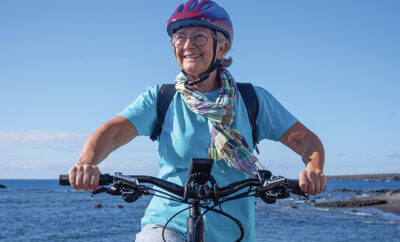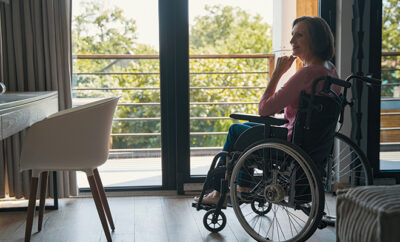
Stay Independent!
As we age, concerns about where we might live out our golden years become increasingly prevalent. Today, more seniors prefer to age in place, driven in part by the soaring costs of long-term care coupled with advances in technology, and wider availability of certain services, such as meal delivery, make staying at home a viable and attractive option.
Some seniors prefer to stay in the homes in which they raised their families, as so many cherished memories reside within those walls. While older adults may not be able to live out all of their days independently, they can remain in their homes much longer by making a few changes to ensure a safe and more functional living environment. You can implement some of these ideas yourself; some require professional assistance.
Assessment of Your Home
Consider getting an assessment of your home by a trained advisor, such as an occupational therapist or a certified aging-in-place advisor, that includes both the exterior and interior of the home. The advisor will assess all entry areas, rooms, bathrooms, the garage, basement and more, evaluating lighting, fire safety and electrical safety. A summary is then given to the homeowner with recommendations for prevention of falls and overall home safety.
Purge
If there are any unnecessary furniture or rugs in the home, remove them. With more space in each room, you can allow for clear pathways and plenty of areas in which to walk without bumping into anything.
Main Living Area
Leave the main living area as open as possible, especially if you require a wheelchair or a walker, since that requires room to navigate and turn around properly. If you still use a landline for telephone service, have access to a phone in each room. Carry a cell phone in your pocket or wear an emergency contact system that has a panic button.
Bathroom Modifications
If you want to age in place, the bathroom requires a detailed evaluation. The traditional bathtub should be replaced with a curbless walk-in shower for easier, safer entry and exit than a bathtub. However, if you choose to keep your existing tub, install grab bars. Walk-in tubs are also popular, as they can be used for a stand-up or sit-down shower. However, if taking a shower intimidates you because you fear slipping and falling, a shower chair is a great safety feature. These are especially useful for individuals who rely on wheelchairs or who experience great pain or difficulty with excessive movement. A rubber mat in the tub/shower will provide additional peace of mind against falling. Also, replace the toilet seat. This may sound trivial, but a raised or padded toilet seat alleviates pain for those who have been injured or have a chronic condition, and it gives older adults the opportunity to use the bathroom more independently. The newer gentleman-height toilet also makes sitting easier.
Keep all items within easy reach. If things are not easily accessible, that increases the risk of injury. Open shelves are great if kept tidy. Otherwise, cabinets with easy-close doors or drawers with pulls are perfect for older hands to grip. And for those hard to open pill bottles that are designed to be childproof? Order some easy-open vials with lids that open and close with one hand.
The Bedroom
While you are still active and agile, look for a more suitable bed. Aging in place requires a bit of forethought, and while you may not think getting a new bed is a big deal now, it will be down the road. Upgrade to a bed that is better suited for an older adult. An adjustable bed looks like a standard bed when flat, but you can adjust it to your own preferred sleep position.
Choose Low-Maintenance Exterior Materials
When you are ready to replace any exterior materials, consider vinyl siding, metal roofing and composite decking, all of which require little to no maintenance. Plus, they look good and enjoy lasting performance. If you can’t live without landscaping but don’t want to fuss with the extra work, choose native plants and install a time-activated sprinkler system. The less exterior upkeep you have, the fewer struggles you will endure.
Remember the Details
Many little things in the home can pose a big hazard. Remove any potential tripping hazards such as loose area rugs, uneven floorboards and extension cords. Install motion-activated lights throughout your home to improve visibility. Keep all rooms clean and clutter-free. Keep items off stairways and be sure they have proper lighting; you could even install motion-activated lighting under each tread or on the walls to provide safety.
When you take the time to improve the safety of your home, you will prevent injuries to yourself and others while still maintaining your independence. ■
Sources: umh.org, caregiverhomes.com and wrightstuff.biz.







